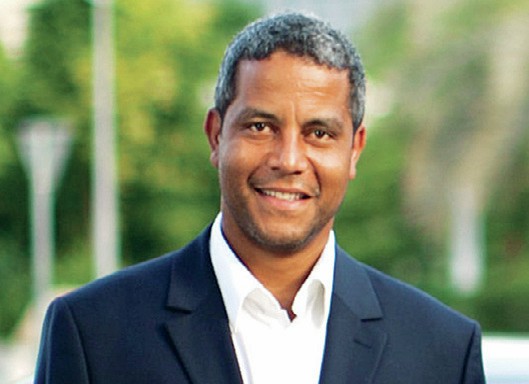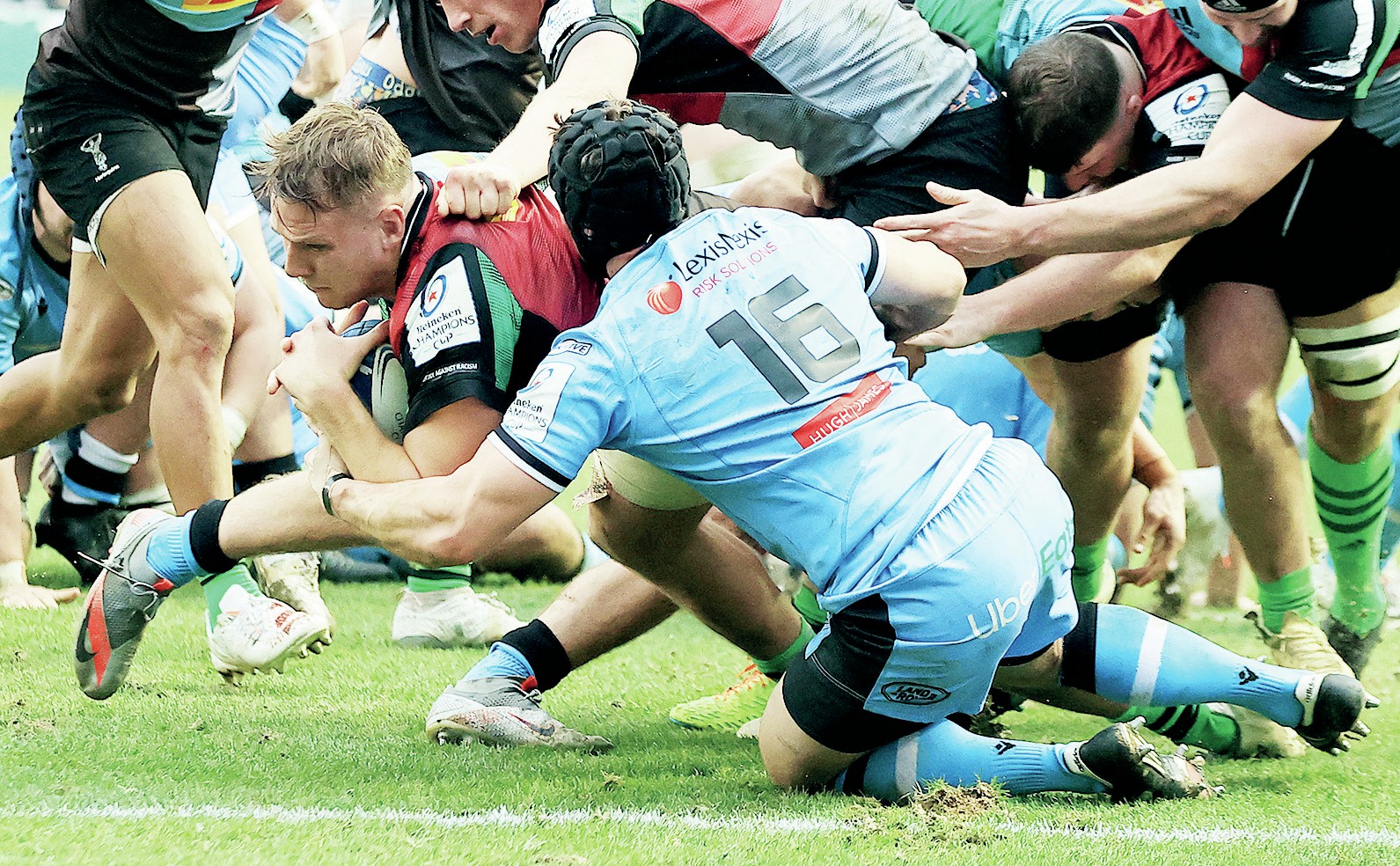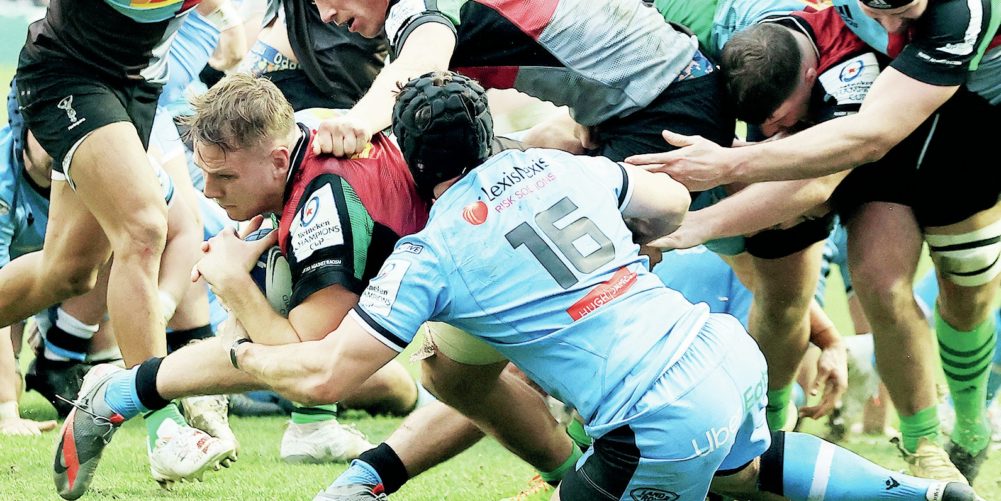JEREMY GUSCOTT
OUTSPOKEN AND UNMISSABLE… EVERY WEEK

AS 2021 draws to an end a strong potential remedy to address one of the most urgent issues facing the game – concussion – appears to have been ignored.
Instead of seeing urgent action being taken nothing has been done to reduce the number of substitutes, despite it being one of the most obvious means of reducing the incidence of high impact collisions. The subject has hardly had a mention on the World Rugby front, and while there is a need for medical studies to back up decisions on law alterations which address concussion, there is also a common sense argument for reducing the eight-man replacements bench.
One of the most significant arguments for taking action to limit the number of substitutions is that it does not involve any significant change to the essential character of the game. Up until the early 1990s the only replacements allowed in Rugby Union were for injuries, but over the last 30 years it has changed with tactical substitutes introduced, with the numbers allowed increasing to the current level where you can replace more than half your team.
The number of replacements/ substitutes has not changed the essential elements of Rugby Union as a physical contact sport, in which you have scrums, lineouts, rucks, mauls, tackling, and running, handling, and kicking of the ball – but, crucially, what it has done is increase the intensity and impact of collisions.
We cannot eradicate collisions in Rugby Union, because it is an intrinsic part of the nature of the sport, but what we can do is lessen the force and potentially damaging consequences of high-frequency, high-impact collisions by having fewer substitutes coming on fresh against tiring players. To do this we must be prepared to return Rugby Union back to its old 15-a-side principles of being a game in which players wear each other down over 80 minutes.
It is logical that 30 players will get more tired than 46 when they are playing 80 minutes of rugby. And, while I don't know the exact science of the forces involved in a collision between two players in the third minute of the match compared to the impact between those same two players in the 78th minute, my sense is that it will be much more powerful in the opening minutes.
This seems like common sense, but Rugby Union is a game in which there are many conflicts of interest. For instance, I understand that today's coaches might not like the lack of alternatives if they cannot change their starting line-up over the course of 80 minutes.
Last weekend, for example, I read that the Leicester front row substitutes made by head coach Steve Borthwick had a big impact on their win over Connacht – and I can see players, as well as coaches, not wanting to lose that option. Players who have managed to secure a place on the bench will not want to see their playing opportunities diminish by it moving back to a 15-man game, rather than a 23-man game.
“More fatigue means more mistakes, more space, and more tries”
However, at the same time I'm surprised that new investors like CVC, and leading sponsors, have not recognised that returning to a 15-man game would make it more attractive. This is mainly because more fatigue means more mistakes, more space, and more tries – which is not a backward step.
Some pro coaches and players might not want fewer substitutes, but it is the best way to address the concussion issue and help player welfare.

ONE reason for optimism among England fans going into 2022, is that the team appears to have turned the corner. After the Autumn Internationals England have got a lot of reasons to be cheerful.
They might not have the scariest scrum in the world, but they came back strongly after a weak 2021 Six Nations, and had just enough to beat South Africa, and more than enough to beat Australia.
In the process, England discovered they have a good fly-half in Marcus Smith and a similarly good full-back in Freddie Steward. It's a different picture in midfield, where it all looks a bit barren when Manu Tuilagi is unavailable – and it seems we are just waiting for another inside centre to come through. I like Joe Marchant, but he is an outside centre, and I am not sure that anyone else in midfield is guaranteed their place at the moment.
What I know for sure is that I don't like the idea of a playmaker 12 anywhere near as much as a powerhouse inside centre like Tuilagi, Damian de Allende, or Ma'a Nonu.
Even so, the potential is there with 20 games to go until the World Cup – although I'm not sure if Eddie Jones has enough time to build a team of world champions.
He may have blooded Smith and found Steward, but he needs to find two or three more game-changers. He certainly needs a couple in the pack, and there are signs that Alex Dombrandt could rise to the occasion at No.8. However, Eddie needs something more in the front row. England had a great ball-carrier in Mako Vunipola, but now they need an explosive front rower like Ireland's Tadhg Furlong, who can scrum as well as carry.
BATH have me stumped. On paper the side looks good, but there are a lot of disconnects, and it is just not happening for my old club. Some of the performances, despite the record run of defeats, have been okay – but too many have not, and to be at the bottom of the table, having not won a game this season, means there is a huge amount wrong.
The announcement of Johann van Graan arriving from Munster to become head coach next season means that many Bath players will be playing for their contracts, while others will already have decided their next move – and he will be keeping an eye on that.
There are signs that Stuart Hooper will remain as director of rugby, but that Van Graan will select the team – but there are still many unknowns.
What we know for certain is that something has to change.



























